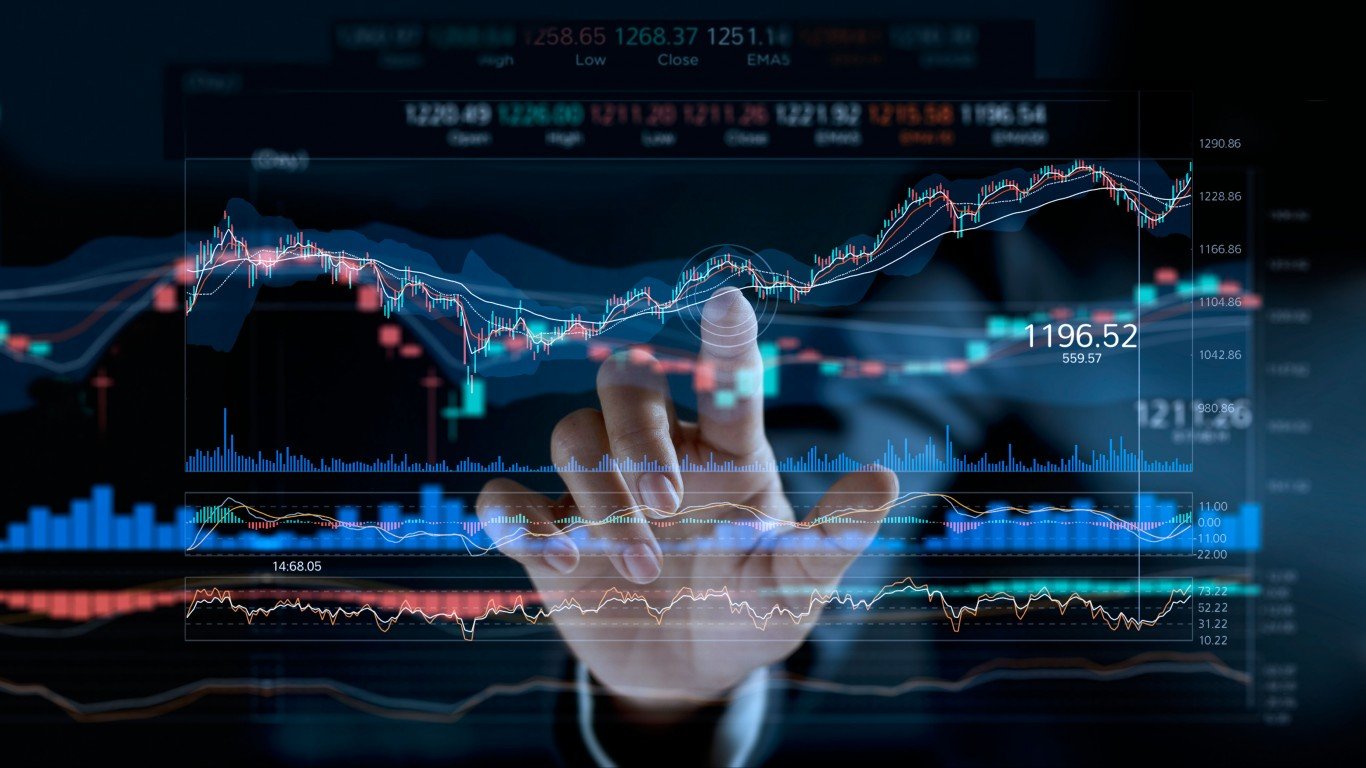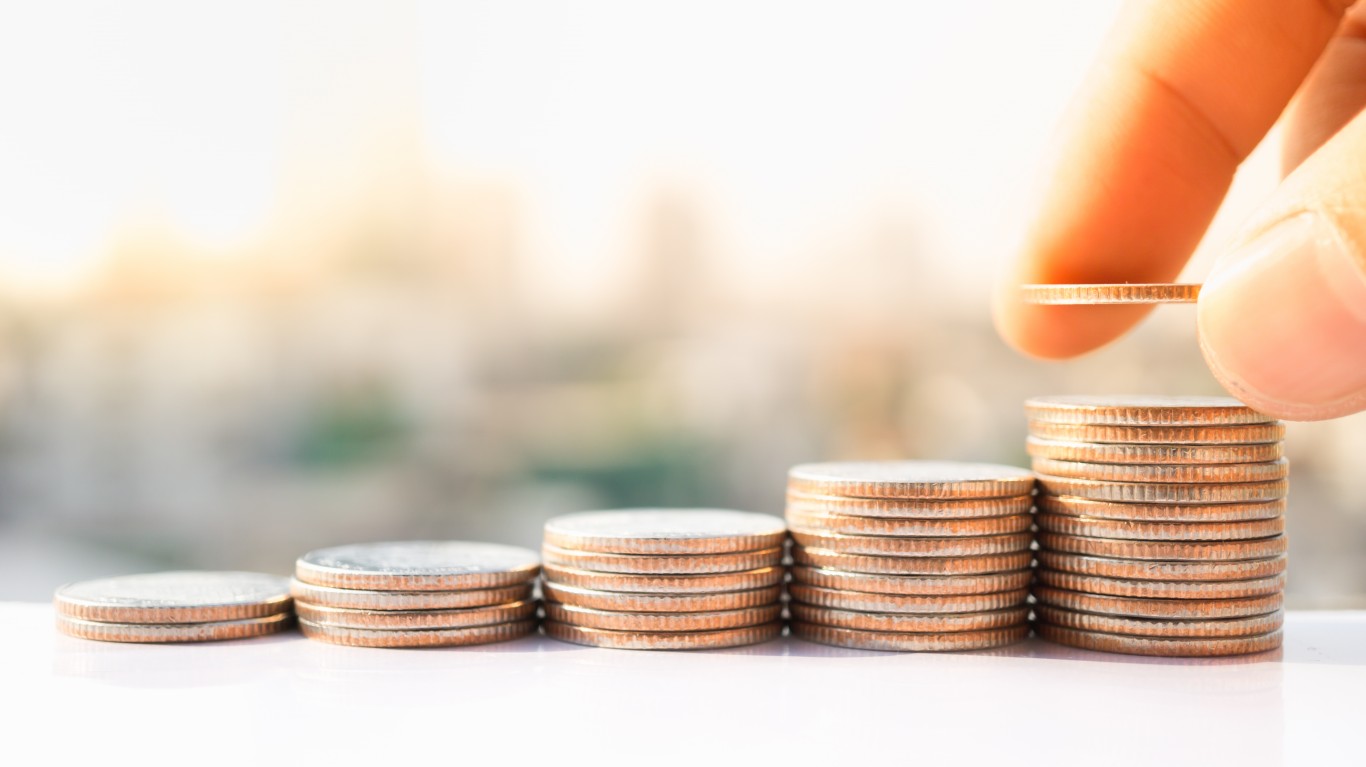

A key component of income investing is a portfolio that includes safe dividends, those that are unlikely to shrink or disappear. Recognizing when a dividend is stable and safe can be a challenge. Yet, certain metrics can offer clear signs for the investor looking to establish or shore up such a portfolio. What do these metrics tell us about the quarterly dividend at Walmart Inc. (NYSE: WMT)?
Walmart’s most recent payout was $0.57 a share, and the yield is now about 1.4%. The next ex-dividend date is expected in mid-March. The current yield is less than that of big-box retailers Best Buy Co. Inc. (NYSE: BBY), Home Depot Inc. (NYSE: HD) and Target Corp. (NYSE: TGT), but better than that of Costco Wholesale Corp. (NASDAQ: COST). It is also a little lower than the consumer staples sector average of about 1.9%.
Dividend Aristocrat?

Other Valuation Metrics

The dividend payout ratio indicates how much of a company’s earnings are paid out as a dividend. It is a sign of how safe a company’s dividend is and how much room it has for future growth. The higher the ratio, the greater the risk. Income investors often look for a dividend payout ratio of less than 60%. Walmart hits that mark with a current dividend payout ratio of about 37%. That is slightly higher than the industry average but less than Walmart’s average dividend payout ratio of 44% over the past decade.
A look at free cash flow reveals whether the company has the funds required for its payout, as well as for share repurchases or even paying down debt or making acquisitions. Income investors prefer growing free cash flows. At Walmart, though the annual figure varies, ranging from about $10.7 billion to $26.0 billion in the past decade, sometimes rising and sometimes falling. That lack of directionality is true for the competitors mentioned above as well.
Return on invested capital is a measure of how well a company allocates its capital to profitable projects or investments. Again, the thing to look for is stability, specifically a double-digit ROIC over many years. Walmart’s current ROIC is near 10%. However, the figure varies here too, from as high as 15% or so to less than 5% in the past 10 years. Target’s current ROIC is in the same neighborhood as Walmart’s.
Operating margin is a measure of the percentage of revenue a company keeps as operating profit. Here too the preference is for a stable double-digit percentage increase. The current figure is less than 3%. The margin has mainly drifted lower from about 6% back in 2011. The operating margins at the competitors mentioned above are around 3% or so, except at Home Depot, where it is much higher.
A look at sales growth offers a clue to the volatility or cyclical nature of the business. Steady, moderate growth, say 3% to 7%, is ideal. This is the metric where Walmart shines. Annual revenue has marched from around $408 billion in 2010 to almost $649 billion. Costco and Home Depot have also seen steady growth in that time.
A company’s net debt-to-capital ratio also can signal whether a dividend may be at risk. Because too much debt can put dividends at risk in hard times, a lower ratio is considered better. A debt-to-capital ratio above 0.6 usually means that a business has significantly more debt than equity. The ratio at Walmart has been between 0.3 and 0.4 since 2006.
Probably the most popular valuation metric is the price-to-earnings (PE) ratio. This indicates whether a stock is expensive or cheap at its current market price, compared to the broader market or to competitors. Walmart has a trailing PE ratio of almost 27. That has decreased from more than 43 over the past few quarters, and the forward PE is closer to 23. So, a bit high but headed in the right direction. It also compares with a historical benchmark of 15, as well as the broader market’s current 24 or so. Costco’s PE is much higher, while those at Best Buy and Target are lower. The industry average is around 17. (See which five blue chip dividend stocks make up 75% of Warren Buffett’s portfolio.)
And finally, the number of shares outstanding is worth a look. When companies buy back their shares, that number shrinks. But secondary offerings of stock increase that number. Investors tend to prefer a declining total, as that increases their stake over time. For Walmart, the number of shares has declined from about 3.8 billion in 2010 to around 2.7 billion. The company announced a share buyback plan of up to $20 billion back in November. It has not had a stock split since 1999.
Summary

| Dividend Aristocrat | ✔ |
| Dividend payout ratio | ✔ |
| Free cash flow | 🗙 |
| Return on invested capital | 🗙 |
| Operating margin | 🗙 |
| Sales growth | ✔ |
| Net debt-to-capital ratio | ✔ |
| PE ratio | ✔ |
| Shares outstanding | ✔ |
Walmart and other retailers are in a cyclical industry and so rely heavily on the business cycle and economic conditions. Things like inflation and consumer sentiment can have a large effect on the business, including such metrics as operating margin and free cash flow. However, strong revenue growth supports the attractive dividend payout ratio. Walmart is likely to remain a Dividend Aristocrat going forward.
Take This Retirement Quiz To Get Matched With A Financial Advisor (Sponsored)
Take the quiz below to get matched with a financial advisor today.
Each advisor has been vetted by SmartAsset and is held to a fiduciary standard to act in your best interests.
Here’s how it works:
1. Answer SmartAsset advisor match quiz
2. Review your pre-screened matches at your leisure. Check out the
advisors’ profiles.
3. Speak with advisors at no cost to you. Have an introductory call on the phone or introduction in person and choose whom to work with in the future
Take the retirement quiz right here.
Thank you for reading! Have some feedback for us?
Contact the 24/7 Wall St. editorial team.



